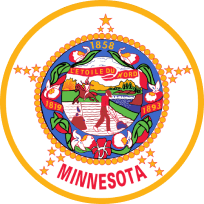
Proving an employer negligence lawsuit is vastly different than proving a workers’ compensation case.
The most notable difference is that workers’ comp is a no-fault system, which means you do not need to prove negligence to bring a successful workers’ comp claim if you are injured at work.
Most injured employee claims will be exclusive to workers’ compensation.
In other words, if you get injured at work, you generally have to go through workers’ comp to get compensation.
However, there are instances where you might be able to pursue a negligence claim (for example, if the employer failed to carry workers’ comp insurance or your injury was actually caused by a third party).
Every employer, regardless of circumstance, must provide a safe work environment for their employees.
Failing to provide a safe work environment and adequate safety measures could result in employer liability.
As with any case of negligence, the plaintiff must prove the defendant acted negligently.
Remember, a potential negligence action is separate and apart from any workers’ compensation claim.
Depending on the circumstances, you may have one or both. Contact the employer negligence attorneys at Arechigo & Stokka to discuss your options.
How to Prove Employer Negligence in the Workplace
To prove negligence against your employer, you must prove the traditional four negligence prongs: duty, breach, causation, and damages.
Every employer owes their employees a duty of care. If you can prove your employer deviated from that standard of care and that it caused your injury, you may have a successful negligence claim.
There are many ways in which an employer may be negligent. However, three of the most common are as follows.
Failure to Supply Proper Safety Equipment
If you are injured because your employer did not provide proper safety equipment or provided defective or inoperable equipment, you may have grounds for a negligence suit.
Many jobs require specific and necessary safety equipment. For instance, if your job involves working on high rafters, you probably need safety harnesses.
If your employer fails to supply them or supplies defective harnesses, they may be liable.
Failure to Provide Adequate Training
One essential responsibility of any employer is ensuring employees have adequate training.
A good training program can help employees, supervisors, and employers work safer.
Proper training is crucial when working with heavy machinery, hazardous materials, or sharp tools.
If your employer does not provide the necessary training, they may be in hot water.
OSHA and MNOSHA Violations
The Occupational Safety and Health Administration (OSHA), on both the federal and state level, have adopted rules and guidelines for employers to follow in various industries.
These safety standards are implemented to keep employees safe while at work. OSHA requirements can range from hard hat requirements on construction sites to food prep safety in commercial kitchens.
However, if your employer violates these guidelines, they may not only receive an OSHA violation but may also be on the hook for negligence.
Do I Need an Attorney for Employer Negligence?
These claims can be very complicated and time-consuming, often involving boatloads of discovery.
Sometimes you may have more than one claim compounding the complexity of the case. You need an experienced attorney working on your behalf. Let us be your voice.
Minnesota Employer Negligence Lawyers Holding Employers Responsible
At Arechigo & Stokka, we have decades of experience and hundreds of cases under our belt.
If you or a loved one was injured at work and you suspect your employer’s negligence is to blame, don’t wait to contact us.
In Minnesota, you generally have two years from the date of the accident to file a negligence claim.
An employer negligence lawsuit can be complex, especially if you are up against a large corporate employer.
Hiring an experienced and knowledgeable employer negligence attorney can mean the difference in success. Contact us online today to schedule a consultation.



